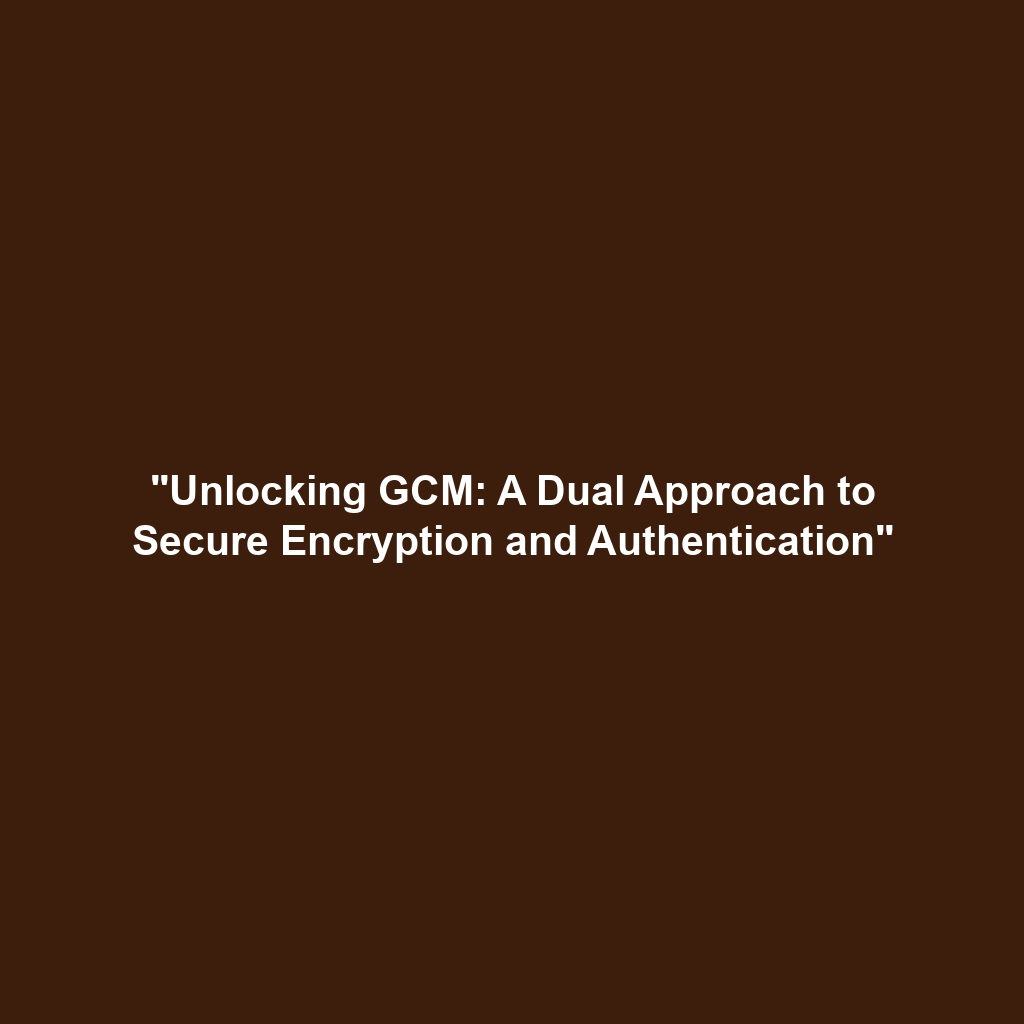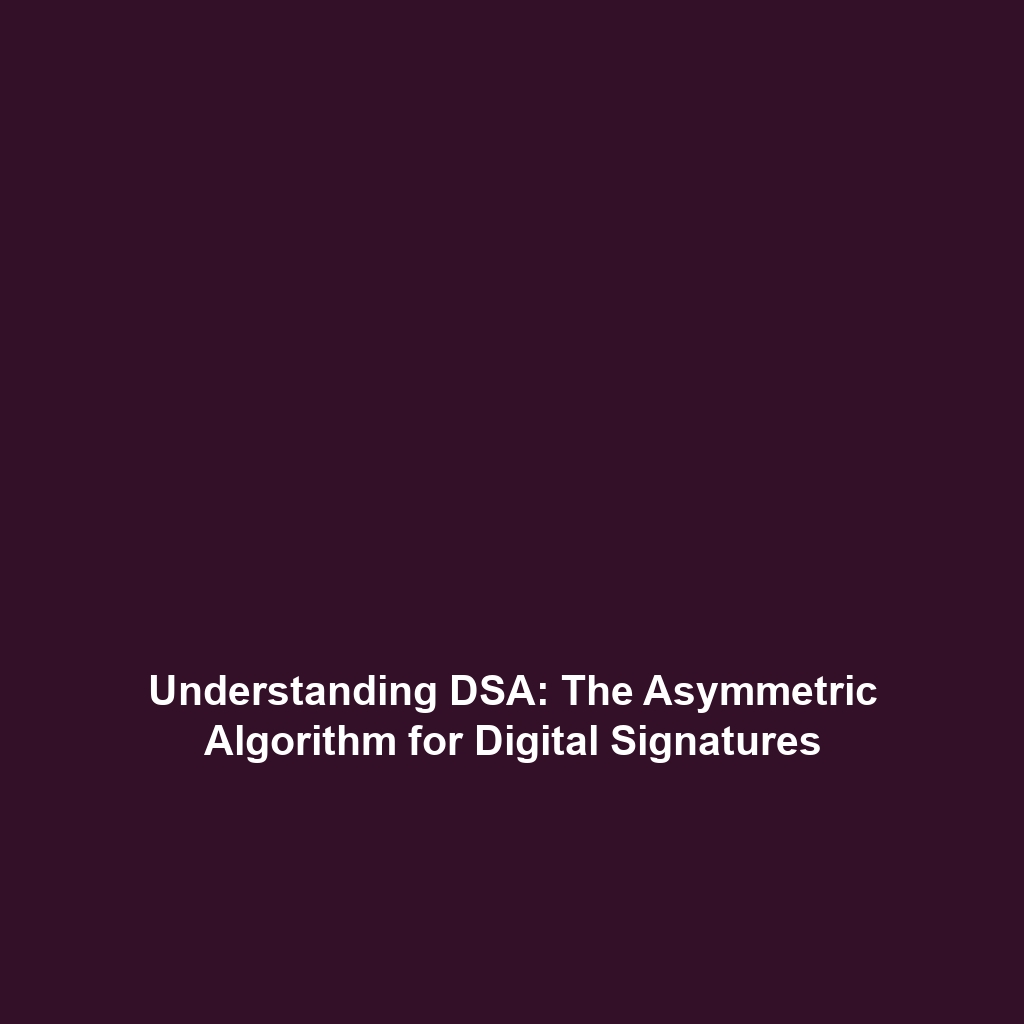GCM (Galois/Counter Mode): Combines Encryption and Authentication for Efficient Secure Communication
Introduction
Galois/Counter Mode, or GCM, represents a pivotal development in the realm of cryptography, merging encryption and authentication into one streamlined operation. Its significance lies in its ability to provide both confidentiality and integrity to data, ensuring secure communication in today’s digital landscape. As cyber threats increase in sophistication, GCM’s role as a robust encryption method cannot be overstated. This article delves into the core principles, applications, challenges, and future innovations around GCM, demonstrating its crucial positioning in modern cryptography.
Key Concepts
Understanding GCM
GCM is a mode of operation for symmetric key cryptographic block ciphers, combining two fundamental operations:
- Counter Mode (CTR): Provides encryption through the generation of keystreams, allowing for efficient parallel processing.
- Galois Mode: Ensures data authenticity by using polynomial operations over finite fields, enabling efficient generation of authentication tags.
This dual functionality makes GCM particularly attractive for applications requiring high speed and security in cryptography.
Applications and Real-World Uses
The practical applications of GCM in cryptography are extensive. Here are some significant uses:
- Network Security: Used in protocols such as TLS (Transport Layer Security) to secure data transmitted over the internet.
- Data Storage: Employed in encrypting sensitive information on cloud storage platforms.
- Virtual Private Networks (VPNs): Utilized to protect data traffic between user devices and VPN servers.
These applications illustrate how GCM enhances secure communication by integrating encryption and authentication seamlessly.
Current Challenges
Despite its advantages, GCM faces several challenges and limitations in cryptography. These include:
- Nonce Misuse: The need for a unique nonce for each encryption operation is critical; failure can lead to serious vulnerabilities.
- Performance Overhead: While GCM is efficient, it requires additional processing for authentication, which can be a limitation in resource-constrained environments.
- Security Limitations: Existing security proofs are based on assumptions that may not hold under all conditions, necessitating continuous scrutiny and research.
Future Research and Innovations
The future of GCM in cryptography holds exciting possibilities. Researchers are exploring several innovations, including:
- Enhanced Security Protocols: Development of next-gen protocols that address current vulnerabilities while maintaining the efficiency of GCM.
- Quantum-Resistant Algorithms: Investigating the implementation of GCM within quantum-resistant frameworks to prepare for future cryptographic challenges.
These innovations aim to ensure GCM remains relevant and secure in an ever-evolving digital landscape.
Conclusion
In summary, GCM (Galois/Counter Mode) stands as a significant advancement in cryptography for its unique ability to combine encryption and authentication efficiently. As emerging technologies and cyber threats continue to evolve, understanding and implementing GCM will be critical for secure communication. For further reading on related cryptographic techniques, consider exploring our articles on symmetric key algorithms and modern encryption methods.

